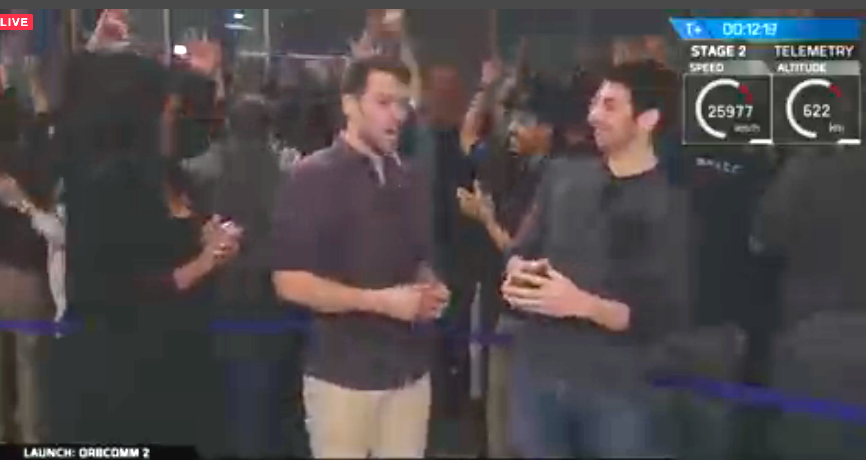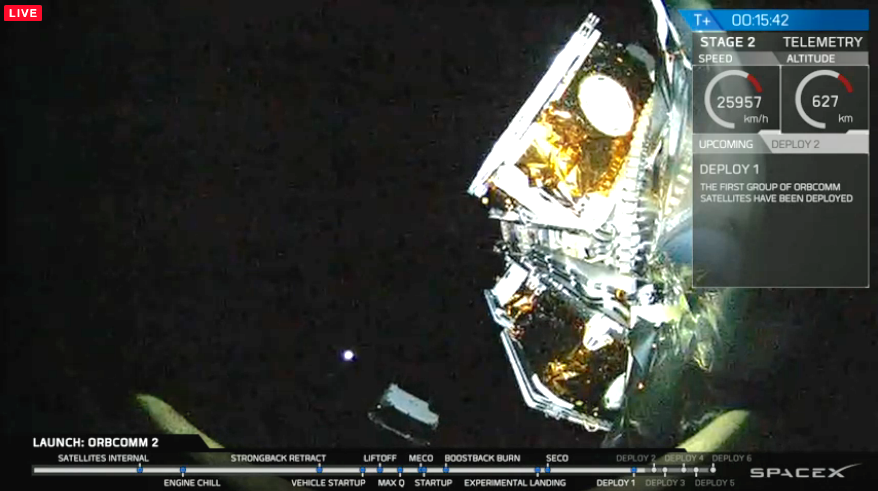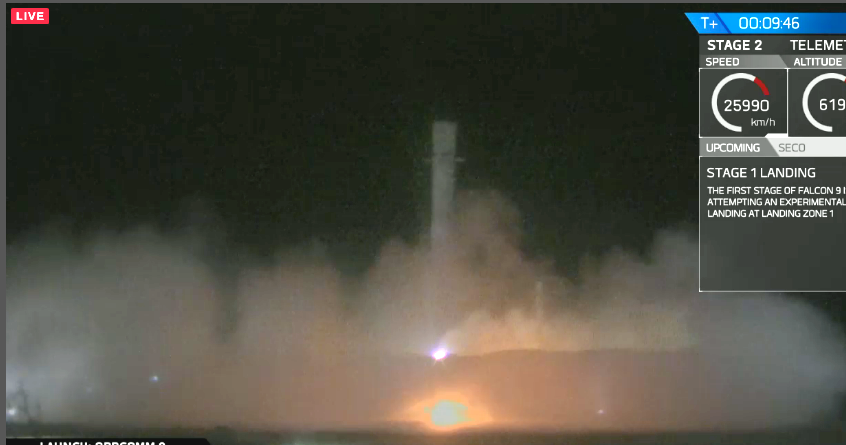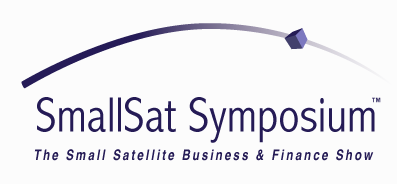
Celebration as mission after mission was successful
[Satnews] Spirits were sky high at SpaceX as the drama unfolded live before everyone's eyes. If successful this would be an historic first... and it was!
The clock was running and in less than an hour history has been made at Cape Canaveral. As the Falcon 9 soared higher the first stage of the rocket that is normally disposed of was in fact able to return to Cape Canaveral's Air Force Station. About three minutes after liftoff, the Falcon 9’s second stage separated in the upper atmosphere and went on to place 11 communications satellites, made by the Sierra Nevada Corporation, into an orbit 400 kilometers high for ORBCOMM.
The 11 satellites were deployed approximately 20 minutes after liftoff, completing a 17-satellite, low Earth orbit constellation for ORBCOMM. This mission also marks SpaceX’s return-to-flight as well as its first attempt to land a first stage on land. The landing of the first stage was a successful test objective.

Success with release of first of ORBCOMM's 11 small sats
News posted on ORBCOMM's site read:
December 21 (8:50 p.m. ET)
SpaceX successfully launched the Falcon 9 rocket and deployed all 11 ORBCOMM OG2 satellites in nominal orbits. SpaceX successfully landed the first stage of its Falcon 9 at its Cape Canaveral landing pad.
By landing and recovering the first stage, SpaceX has an opportunity to refurbish and reuse the first stage on future launches. The vehicle’s first stage adjusted its trajectory, reentered the atmosphere and performed a soft, precision landing. This marks the first time in history any part of an orbital rocket has achieved a 'land-landing'.

SpaceX's launch and return took place at the 45th Space Wing at Cape Canaveral.
Note: Recently on December 6th the 45th Space Wing also supported NASA's successful launch of Orbital ATK CRS-4, aboard a United Launch Alliance Atlas V rocket to the International Space Station from Space Launch Complex 41 and made history, too. USAF's 45th Space Wing enjoyed a celebration of 50 years with NASA and ULA.
Kudos are arriving and one of the first received...

What went up came right back down making history.
Congratulations to SpaceX on an Incredible Milestone
From Commercial Spaceflight Federation

December 21st, 2015
Washington D.C. - SpaceX accomplished an incredible achievement this evening when the first stage of its upgraded Falcon 9 rocket landed safely on solid ground in Cape Canaveral, Florida.
About three minutes after liftoff, the Falcon 9’s second stage separated in the upper atmosphere and went on to place 11 communications satellites, made by the Sierra Nevada Corporation, into an orbit 400 kilometers high for ORBCOMM. The vehicle’s first stage adjusted its trajectory, reentered the atmosphere and performed a soft, precision landing. This marks the first time in history any part of an orbital rocket has achieved a land landing.
“It is clear that all of the time and hard work SpaceX spent upgrading the Falcon 9 paid off in this return to flight,” said Eric Stallmer, president of the Commercial Spaceflight Federation. “Through a year of hard lessons learned, SpaceX’s December return to flight and successful planned landing of its first stage, just six months after the June mishap, reminds us of this industry’s best qualities: agility, innovation and perseverance. I can’t wait to see what 2016 has in store for us.”
Traditionally, the first stage of a rocket is disposed of after launch, removing an opportunity to reuse valuable hardware. But by landing and recovering the first stage, SpaceX has an opportunity to refurbish and reuse the first stage on future launches. The Commercial space industry is looking to normalize a business cycle of reusability in an effort to drive down launch costs and make spaceflight more accessible.
Many actors within the commercial space industry are working on making reusability viable. Masten Space Systems has been perfecting similar landing techniques for years with its fleet of low-altitude launch vehicles and landers. Also, in late November, Blue Origin’s New Shepherd vehicle touched down after a high-altitude suborbital test flight. While both the Falcon 9 and New Shepherd used their first stage engines to perform a soft landing, their respective mission objectives, trajectories and technical challenges are different. Because the SpaceX’s vehicle was designed to place a constellation of satellites in orbit, the Falcon 9’s first stage flew at significantly greater speeds and more than double the altitude of what New Shepherd reached last month. SpaceX’s return from an orbital launch marks the next technical step forward in the march towards the long-term goal of complete reusability.
____________________________________________________________________________________________________________________

SmallSat Symposium Set For February of 2016
For a thorough immersion in the smallsat market segment, consider attending the upcoming, two-day and extremely important SmallSat Symposium. This highly informative symposium will be conducted on Tuesday, February 23, and Wednesday, February 24, 2016. The event will occur at the Hogan Lovells Conference Center in Silicon Valley, California, and is organized and sponsored by Satnews Publishers.
For further details and to register, please visit http://www.smallsatshow.com/?page_id=18

